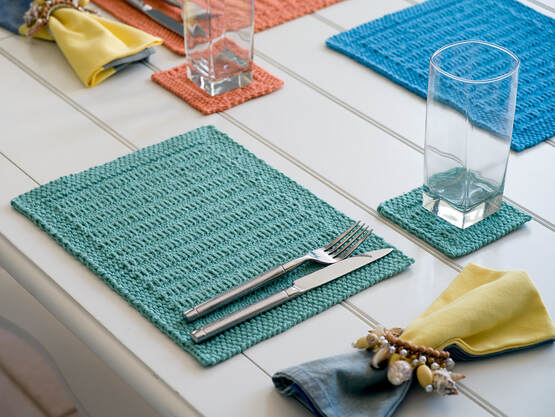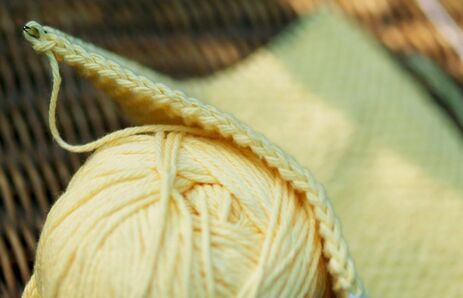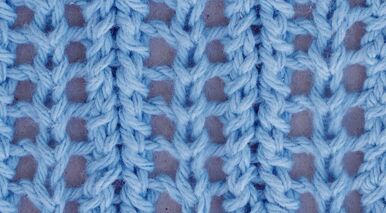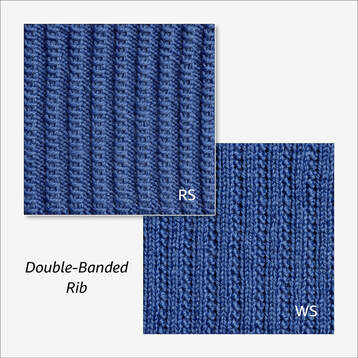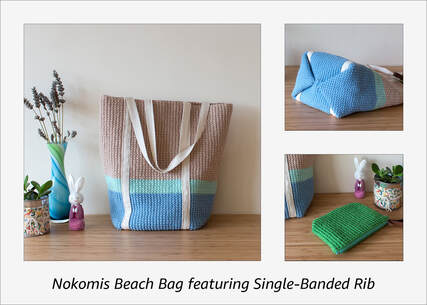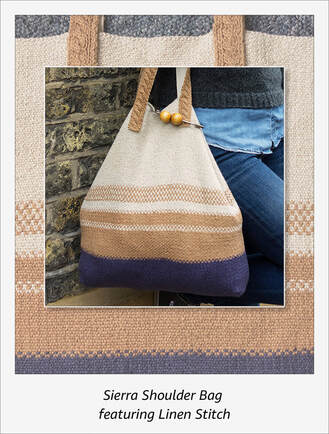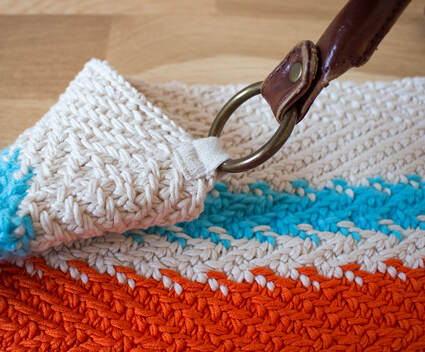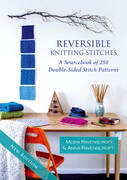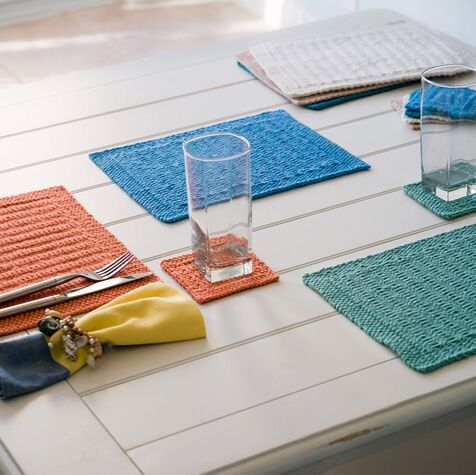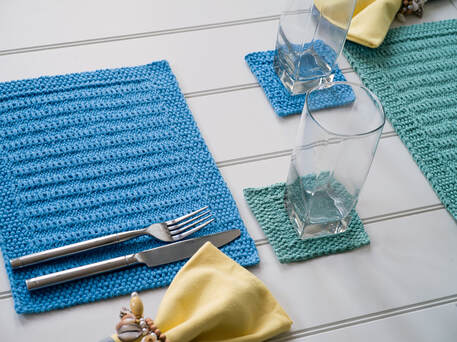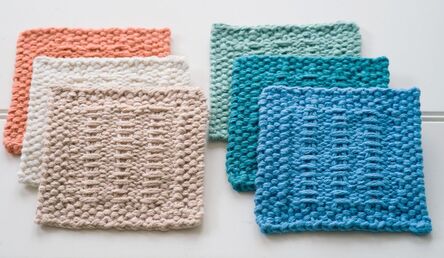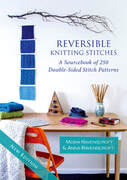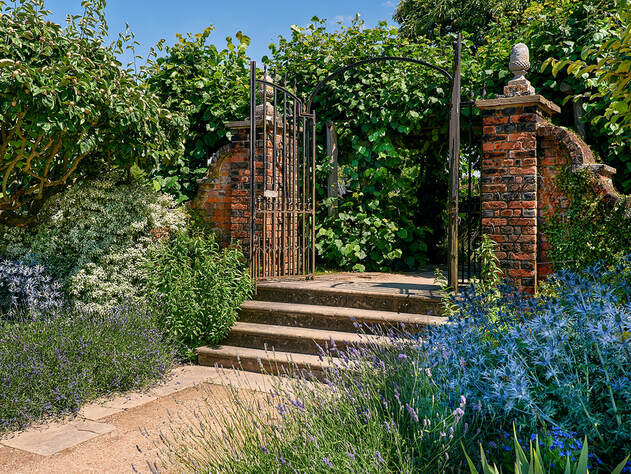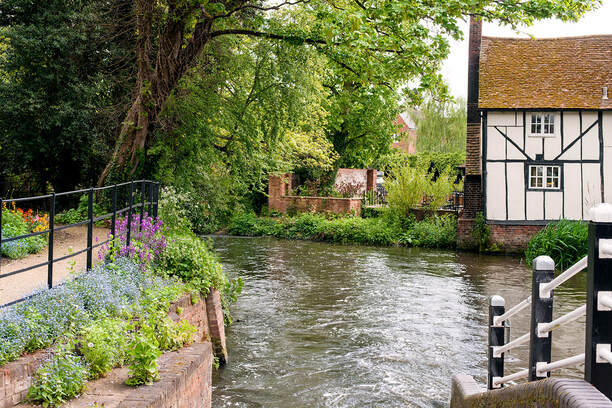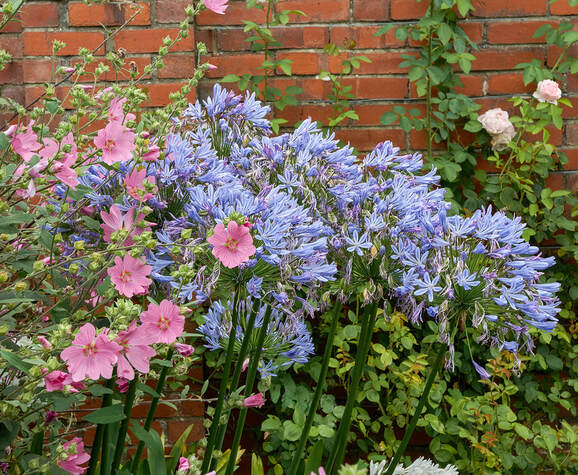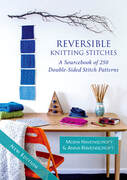I once watched a theatre production of "The Importance of Being Earnest" in which the redoubtable Lady Bracknell sat on stage apparently knitting. In fact she was slipping the stitches from one needle to another so that the work never got any longer! However, that did avoid the possibility of a ball of yarn wandering across the stage and tripping up any actors...
However, slipped stitches are really useful even when you do actually want to knit something, and can be used for shaping, textural interest and strength.
However, slipped stitches are really useful even when you do actually want to knit something, and can be used for shaping, textural interest and strength.
So what is a slip stitch? Basically it is when you leave the next stitch unworked and move on to the next part of the work.
Usually the stitch is slipped purlwise without twisting it and with the yarn carried at the back of the work. If you just see the instructions "slip 1" or just "sl 1" then that is what is meant. The stitch will then be worked on a subsequent row, producing an elongated stitch which also serves to tighten the stitches to either side.
You will probably have seen this being used at the edge of a flat piece of knitting to produce a selvedge. The photo above, for example, shows the base of the BYOB Market Bag being worked, and you can read more about that here.
Usually the stitch is slipped purlwise without twisting it and with the yarn carried at the back of the work. If you just see the instructions "slip 1" or just "sl 1" then that is what is meant. The stitch will then be worked on a subsequent row, producing an elongated stitch which also serves to tighten the stitches to either side.
You will probably have seen this being used at the edge of a flat piece of knitting to produce a selvedge. The photo above, for example, shows the base of the BYOB Market Bag being worked, and you can read more about that here.
Sometimes, however, the stitch being slipped is worked knitwise. You insert the knitting needle into the stitch as though you are going to knit it but then just move it to the right-hand needle without working it further. This turns the stitch so that it is now facing in the opposite direction.
One of the first places you might encounter this is with a decrease such as a "slip 1 knitwise, knit 1, pass slipped stitch over", often shortened to SKP. In that case, the slipped stitch is lifted over the next one and forms a left-leaning decrease as an almost-mirror image to the "knit 2 together" or k2tog right-leaning decrease.
The photo above shows the lace panel from the BYOB - Bring Your Own Bag pattern. In this one I have paired the k2tog's with another left-leaning decrease, the SSK (slip-slip-knit) giving a decorative finish to the stitch, and you can read more about that here.
In both those examples the yarn is carried on the wrong side and does not appear on the front face of the work. However, there are a number of stitches where the yarn being slipped forms an integral part of the final appearance of the fabric.
One of the first places you might encounter this is with a decrease such as a "slip 1 knitwise, knit 1, pass slipped stitch over", often shortened to SKP. In that case, the slipped stitch is lifted over the next one and forms a left-leaning decrease as an almost-mirror image to the "knit 2 together" or k2tog right-leaning decrease.
The photo above shows the lace panel from the BYOB - Bring Your Own Bag pattern. In this one I have paired the k2tog's with another left-leaning decrease, the SSK (slip-slip-knit) giving a decorative finish to the stitch, and you can read more about that here.
In both those examples the yarn is carried on the wrong side and does not appear on the front face of the work. However, there are a number of stitches where the yarn being slipped forms an integral part of the final appearance of the fabric.
The Somertide Placemats I featured in my last blogpost are a case in point. These use a lovely slip-stitch pattern called Double-Banded Rib from our book Reversible Knitting Stitches. On the front face, the stitch has wide slipped stitches which give an interesting surface texture to the design. These banded stitches also help to provide an extra thickness and insulation to the fabric which is important for something like a placemat where you want to protect your table from hot or cold dishes.
The reverse face shows tight columns of knit stitches with narrow lines of Garter Stitch between. The fabric lies beautifully flat and the slipped stitches give added strength to the overall design.
The slipped stitches in this pattern have strengthened the final fabric in two ways. Firstly, the stitches to either side are shortened because the unworked stitches now have to span two rows instead of just one. This pulls the stitches tighter and keeps the fabric firm.
Then secondly, relatively inflexible bars of yarn are now being carried across the unworked stitches reducing the natural stretchiness of the knitting. The resulting fabric is much thicker and sturdier. These qualities make it eminently suitable for items such as tablemats, rugs and bags.
The reverse face shows tight columns of knit stitches with narrow lines of Garter Stitch between. The fabric lies beautifully flat and the slipped stitches give added strength to the overall design.
The slipped stitches in this pattern have strengthened the final fabric in two ways. Firstly, the stitches to either side are shortened because the unworked stitches now have to span two rows instead of just one. This pulls the stitches tighter and keeps the fabric firm.
Then secondly, relatively inflexible bars of yarn are now being carried across the unworked stitches reducing the natural stretchiness of the knitting. The resulting fabric is much thicker and sturdier. These qualities make it eminently suitable for items such as tablemats, rugs and bags.
If you want an even sturdier fabric, then you can select a slip stitch with a shorter length of travel. For example, in Anna's Nokomis Beach Bag she has used Single-Banded Rib, also taken from our Reversible Knitting Stitches book.
This is similar to its sister pattern, Double-Banded Rib, but is worked over just two stitches instead of four so the "bar" of slipped yarn is much shorter. This gives it extra strength while still retaining a very interesting surface texture.
This is similar to its sister pattern, Double-Banded Rib, but is worked over just two stitches instead of four so the "bar" of slipped yarn is much shorter. This gives it extra strength while still retaining a very interesting surface texture.
But for a really sturdy knitted fabric then one of the best choices is Linen Stitch. This is a simple stitch to work but it does grow slowly as stitches are slipped on every row, as opposed to every two rows as in the previous examples. The result is a fabric that resembles weaving is both the appearance and the feel of the final fabric. In fact, it is sometimes called Tweed Stitch because it looks so much like a woven material.
The photo above shows another of Anna's wonderful bag collection. This one is called the Sierra Shoulder Bag and I can attest to how strong this bag is having seen it in action carrying large volumes of items back to her apartment from Tesco's!
The photo above shows another of Anna's wonderful bag collection. This one is called the Sierra Shoulder Bag and I can attest to how strong this bag is having seen it in action carrying large volumes of items back to her apartment from Tesco's!
The above examples mostly show neat grid-like patterns, but slip stitches can also be used to decorative effect by forming diagonal and zig-zag patterns as in Anna's Calypso Handbag above. Anna has used bands of colour in this design but the stitch pattern also looks good in a single colour.
I hope that gives you lots of ideas for how to use slip stitches in your work, especially if you would like to make sturdy fabrics for tablemats, bags and other household accessories. There are, of course, many more examples of slip stitches and I haven't even touched on Mosaic patterns and other colour slip stitch patterns... So please enjoy hunting out other stitch patterns using slipped stitches.
Many thanks to Anna for the photos of her lovely bags. Please visit her Ravelry store to see more of her colourful designs.
We are heading off on our travels again soon, so please join me next time for a "Postcard from Japan"!
Until then – Happy Knitting!
Moira
I hope that gives you lots of ideas for how to use slip stitches in your work, especially if you would like to make sturdy fabrics for tablemats, bags and other household accessories. There are, of course, many more examples of slip stitches and I haven't even touched on Mosaic patterns and other colour slip stitch patterns... So please enjoy hunting out other stitch patterns using slipped stitches.
Many thanks to Anna for the photos of her lovely bags. Please visit her Ravelry store to see more of her colourful designs.
We are heading off on our travels again soon, so please join me next time for a "Postcard from Japan"!
Until then – Happy Knitting!
Moira
Last Blogpost: New knitting pattern – Somertide Placemats Next Up: Postcard from Kyoto – The day summer started Our book: Reversible Knitting Stitches My Website: www.wyndlestrawdesigns.com |
Keywords: Knitting/Tips & Techniques, Book/Reversible Knitting Stitches,
slipped stitches, slip stitches, Double-Banded Rib, Single-Banded Rib, Linen Stitch, knitting stitches, reversible stitch, reversible patterns, selvedge, selvage, bags, market bag, placemats, table mats, knitted placemat, knitted bag,
slipped stitches, slip stitches, Double-Banded Rib, Single-Banded Rib, Linen Stitch, knitting stitches, reversible stitch, reversible patterns, selvedge, selvage, bags, market bag, placemats, table mats, knitted placemat, knitted bag,
